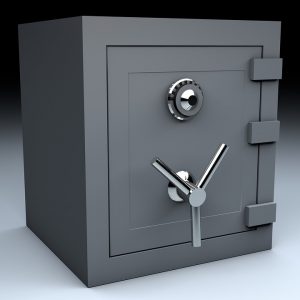Before Calling In
If you need help opening your safe, please have as much of the following information on hand as possible when you place your service call:
- Manufacturer names
- Model numbers
- Approximate size of safes
- Any tags or other identifying information mounted on the safes
If you only want to protect important documents at home, like a will, automobile titles, etc. or anything that are very important to you, but would be of little use to a burglar, you might only need a simple fire safe. They are not very secure, but they are fire resistant and might protect your valuable papers in the event of a house fire. Their fire ratings are not very good (fire resistant, not fire proof) and are time limited to one hour or less. But, these entry level safes are good for those on a strict budget.
Types of Safes: Home Safes (Residential Safes):
Types of Safes: Business Safes (Commercial Safes)
Most businesses require a much higher level of security than home owners. They process and save documents that have tax ramifications, as well as store higher cash money on a daily basis. Various unique vault and safe issues can be very important in situations like this. Most businesses utilize an alarm system in conjunction with their money, safe, or vault.
How a Locksmith Opens a Safe
Cutting
Although professional locksmiths rarely take this course of action, it’s possible to cut a locked safe open. Using either a torch or a saw, they simply cut into the safe. This process is messy, noisy, slow and destroys the safe. Depending on the material used to construct the safe, several sets of saw blades may be needed as they are dulled down.
Drilling
A tiny hole can be drilled into the safe for the locksmith to pass a small instrument inside and see how to open the lock. Many manufacturers now equip safes with advanced interior technology which can make the job challenging, but this is often the preferred method because of the relative speed of the process and the minor repairs needed to render the safe usable again.
Scoping
After drilling a small hole in the safe, a locksmith inserts a borescope into the hole to get an idea of how to open the lock. This is an effective and relatively inexpensive method to utilize when added security measures, such as glass re-lockers or manipulation-proof mechanical locks are present.
Gizmo Locksmith’s Best Safe Services
You probably have lots of questions, and we would love to answer them. Want to learn more about our available safes? Need help with an existing safe? Would you like to schedule an appointment for a safe locksmith technician to come visit your property? Whatever the case may be, please call Gizmo Locksmith Westlake Village and one of our specialized technicians will gladly assist you.
 Safes Services in Westlake Village
Safes Services in Westlake Village